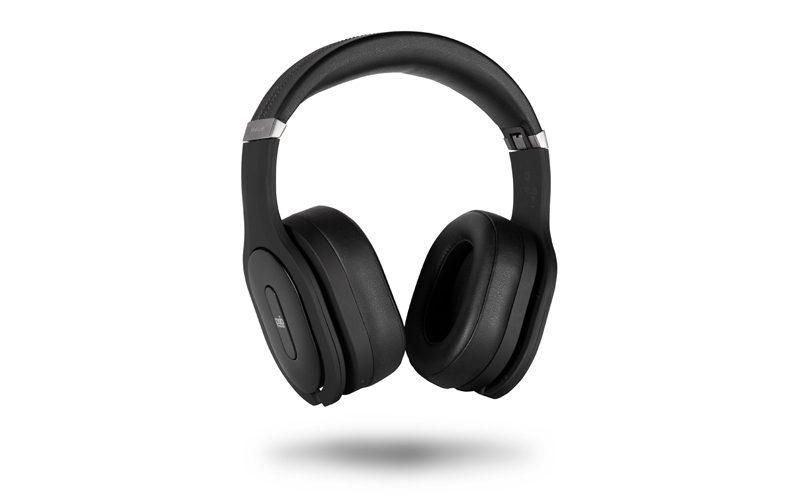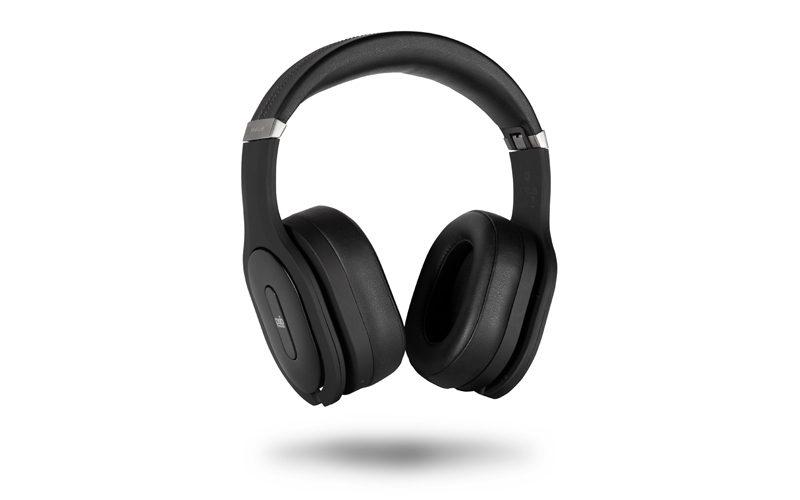

Scott Schumer is an executive in the fields of consumer electronics, commercial audio, video, and IoT who has a passion for custom AV installation, smart home, affordable AV equipment, and high-performance headphones.
He formerly served as sales, marketing and product development at Sennheiser / Neumann USA; Harman; Loud Technologies; and Blue Microphones; and is currently managing North American sales for Peavey Commercial Audio.
PSB Speakers is a Canadian loudspeaker company founded by Paul S. Barton. I love companies with a story, and PSB has a great one--in that the founder cares passionately about music and is continually researching ways to improve the music listening experience. In the headphone realm, after years of research and collaboration, Barton focused on the importance of what he defines as RoomFeel, which he describes thusly: "Headphones should sound like a pair of flat-measuring, full-range speakers properly set up in a good room."
Here's an excerpt taken directly from PSB's paper on RoomFeel: Basically, if you take a direct radiating speaker that measures flat in an anechoic chamber and put it in a room, you'll find that it will have a significantly warmer sound. This happens because as frequency gets lower, the speakers radiate more omni-directionally, and therefore, the sound's low frequency content in the room as a whole gets stronger. In headphones, of course, there is no room response in the equation, and designers have typically either attempted a flat response into the lowest notes or added a big bass hump to satisfy bass lovers. However, no real thought has gone into making a headphone response match that of the typical low-frequency boost heard in a good room. It is here that Barton's long expertise in matters of acoustics comes into play, as he has developed a very well-reasoned headphone target response curve that takes into consideration low-frequency room gain, and a number of other characteristics of a speaker's sound in a room, which we call "RoomFeel."
The brand new M4U 8 ($399.99) incorporates this RoomFeel concept, which is automatically applied when the headphones are in amplified and active noise cancellation (ANC) modes. The result is a warmer, richer, and yet natural sonic signature without any over-emphasis anywhere across the frequency curve. This unique attribute is accompanied by lots of other great features in the M4U 8, including aptX HD Bluetooth and NFC Pairing, call-answer controls, the Active Monitor Function, rechargeable AAA batteries with a micro USB cable for charging, a dual 3.5mm analog input cable, quarter-inch and airplane adapters, an extra set of ear pads, and a travel case.
The headphones employ a collapsible design and are very well protected once placed in the included travel case. One of the many use-cases for this headphone is travel, so the collapsible design and travel case are important features. The inclusion of a fabric loop to use, say, a carabiner to attach the case to your backpack is a nice design touch.
Clearly a lot of thought went into assembling the complete M4U 8 package, but what about the comfort? What about the sound across varied musical genres? What is Active Monitor Function, and how do the headphones sound when you're not using them for travel or when you are not in a noisy environment? Read on!
 Features and Benefits
Features and Benefits
The M4U 8 headphones are a full-size, circumaural design. That is, they fully enclose your ears, providing a degree of passive noise reduction. They are comfortable once you make the easy headband adjustment to get the right fit. As with other headphones in this class, there's a lot going on in these headphones, and one might likely assume that would equate to size and weight disadvantages. Somehow, though, all this technology fits in a streamlined profile and weighs in at a svelte 342 grams (12 ounces). There is an eighth-inch jack on both sides of the headset; so, if you're on a plane and the connection is on the left, you can use the left jack. If it's on the right, you can use the right jack. Nice.
There are three ways to connect the M4U 8 to your audio source: USB, headphone jack, or Bluetooth. The USB method, via most computer audio output jacks, allows you to bypass all other DACs that might be in-line and use the DAC in the M4U 8, if you determine that to be the purest signal path at your disposal. If not, simply use the analog cable or connect via aptX HD Bluetooth, which (as the evolved BT codec) is excellent compared with earlier versions of Bluetooth. You can pair the M4U 8 to your Bluetooth-enabled source "normally" or via NFC (Near Field Communication). Either way, pairing is simple and easy; once done, the devices find each other without fail.
The Active Monitor function allows you to depress the volume rocker/button to instantly reduce the volume of your audio source (-30dB) so that you can hear what's going on around you--for example, if someone starts speaking to you or you want to momentarily listen to a flight announcement or any other environmental sound around you. Simply press the button again to resume volume at your last selected level. Other buttons include call/answer controls, ANC on/off, play/pause, skip ahead/back one track, and Bluetooth on/off. Thankfully these are not labeled black-on-black like so many gadgets these days. PSB uses grey-on-black, which, while not easy to read in low light, is at least easier to see than black-on-black. I'm not proposing anything garish, but how about reflective silver against black? I suppose that, once you are familiar with the layout, you will be using the controls while the headphones are on your head, so you aren't doing this by sight but by feel. The controls are logically laid out, and that is the most important factor here. The rechargeable batteries are AAA; so, in a pinch, you can replace them with standard AAA just to keep going when the rechargeables are flat and you don't have access to a powered USB source.
With a full charge, run time with either amplification or ANC engaged is approximately 15 hours (depending on how loud you are listening), and a full recharge from flat takes roughly three hours. Even if you are without any batteries, the headphones will work, albeit without amplification or the ANC circuit. RoomFeel also requires one of the above modes, so you will lose that, as well. There is also a thermal sensor in each battery compartment as a safety device, in case the batteries overheat while charging. If the battery gets too warm while charging, the charging circuit will stop.
The audio quality while making and taking calls is excellent.
Listening Impressions
The M4U 8 has a frequency response of 10 to 20,000 Hz (-10dB from 10 Hz to 15 Hz, -3dB from 15 Hz to 20 kHz). In my humble opinion, anything in excess of 20 Hz to 20 kHz is like the difference between 500- and 550-horsepower in a car engine. If you are racing other supercars around a track, it might matter; but, if you are driving around town or even going on a long trip, what matters far more is how it all works together. To continue the driving analogy, the suspension, brakes, and even seat comfort all factor into the overall experience ...
And so it is with headphones. Do these deliver a great overall sonic performance? Yes, they do! I conducted several extended listening sessions with sources from action movies to quiet dramas, music from classical to country, with and without amplified and ANC engaged. I never found a track that these headphones couldn't handle very well. From explosions to dialogue, strings to distorted guitar, faithful reproduction was natural and effortless. The M4U 8 headphones can get loud when needed without distortion or harshness. I compared these directly with the Sennheiser PXC 550 headphones that I recently reviewed (and really liked), and I actually preferred the M4U 8, which I attribute to the RoomFeel optimized target. I can fully recommend these for any application.
Did they make me smile? Yes indeed!
High Points
• These headphones have a lot of features--with the unique attribute of RoomFeel technology.
• The company's attention to detail equates to meaningful long-term excellence and satisfaction.
• These are absolutely comfortable, even for extended-wear applications.
Low Points
• There's no Siri, Cortana, Google Assistant, or Alexa integration. You can always access this on your smart phone, and the M4U 8's microphones will engage your voice assistant of choice. However, some competitors integrate this function directly into the headphones so that you don't have to get your smart phone out.
With music paused, when I hit the sleep button on my iPhone, I get a half-second high-pitched beep. This may be an "Apple thing," but the friendly folks at PSB are looking into it.
The included printed instruction manual could be improved. For example, there is no mention of how to make or accept a call (to answer an incoming call, press the Play button; press it again to end the call). A better manual is available online, but I'm still not clear on how to reject an incoming call without going directly to the phone.
Comparison & Competition
The Beats Studio3 Wireless headphones ($349.95) feature Pure Adaptive Noise Canceling, Bluetooth wireless functionality, and good sound quality. The Sennheiser PXC 550 ($399.95) has an incredible array of features and benefits, including excellent sound quality, adaptive noise-canceling, and a fold-up design. The Bose QuietComfort 35 Wireless Headphones II ($349.95) have Google Assistant built in, as well as adjustable noise cancellation. They offer Volume Optimized EQ, which adjusts the sonic frequencies depending on how loud you are listening--sort of like the loudness button for adding bass when listening at low volumes, but I heard some changes even at higher volumes. They do not fold up, though. The Sony MDR-1000X ($248.00) has adjustable noise cancellation, but I felt that, to get the ANC to a level where the outside noise was attenuated fully, the sound quality was negatively impacted. The rest of the Sony's features are well designed and work nicely. As a result, I had to rate the Sony ANC capabilities last in the pack, and ANC is such an important feature for mobile use.
Conclusion
I recently rated the Sennheiser PXC 550 headphones just a bit higher than the comparable models described above, but I must dethrone the PXC 550 in favor of the M4U 8, due primarily to their natural-sounding RoomFeel technology. Now my rankings put the PSB headphones first, followed by the Sennheiser PXC 550 and then the Bose QuietComfort 35 II. It's so close, though, that personal taste and ergonomics will likely be your deciding factors. Between the three brands, you really can't make a bad decision here.
Additional Resources
• Visit the PSB website for more product information.
• Check out our Headphone + Accessory Reviews category page to read similar reviews.
• PSB Now Shipping the New M4U 8 Wireless, Niose-Canceling Headphones at HomeTheaterReview.com